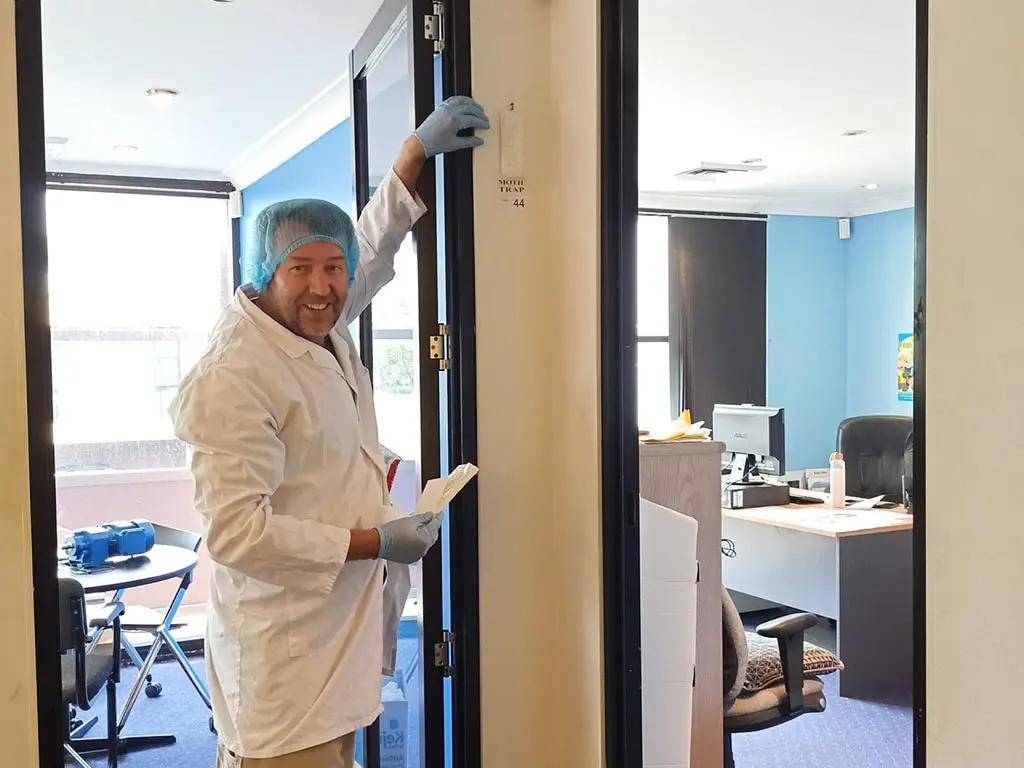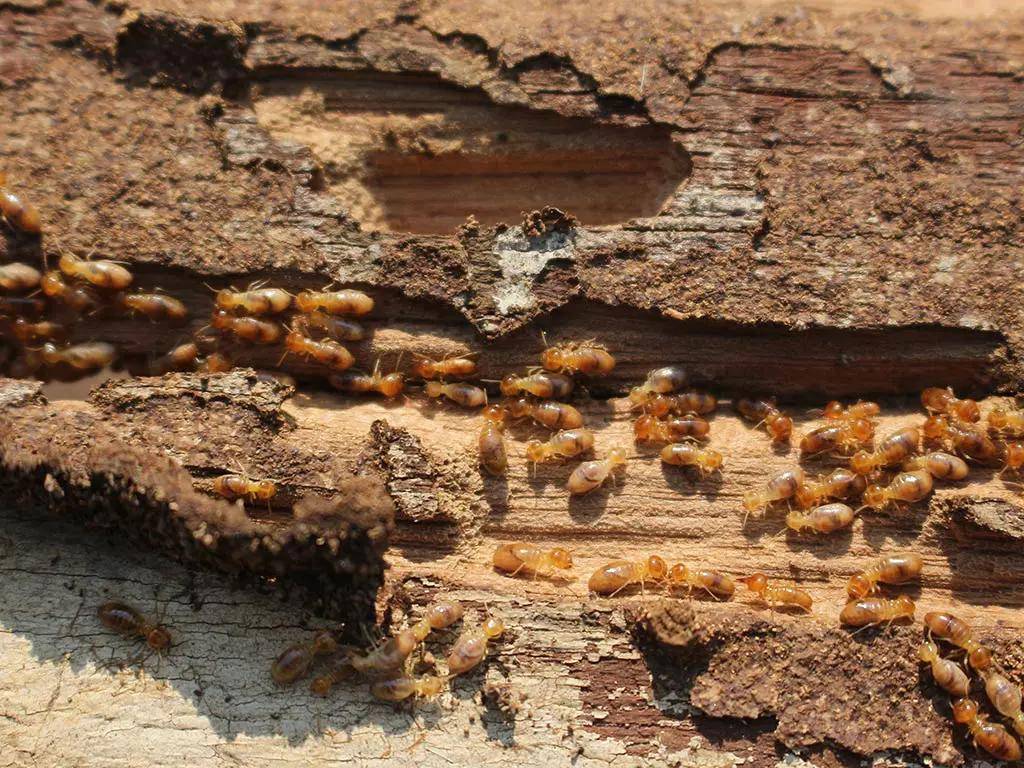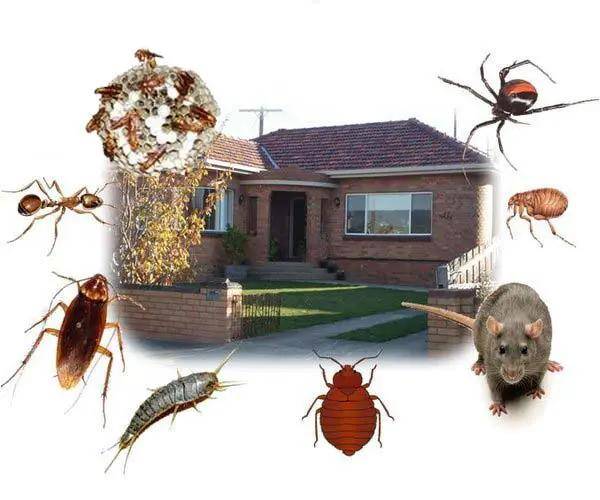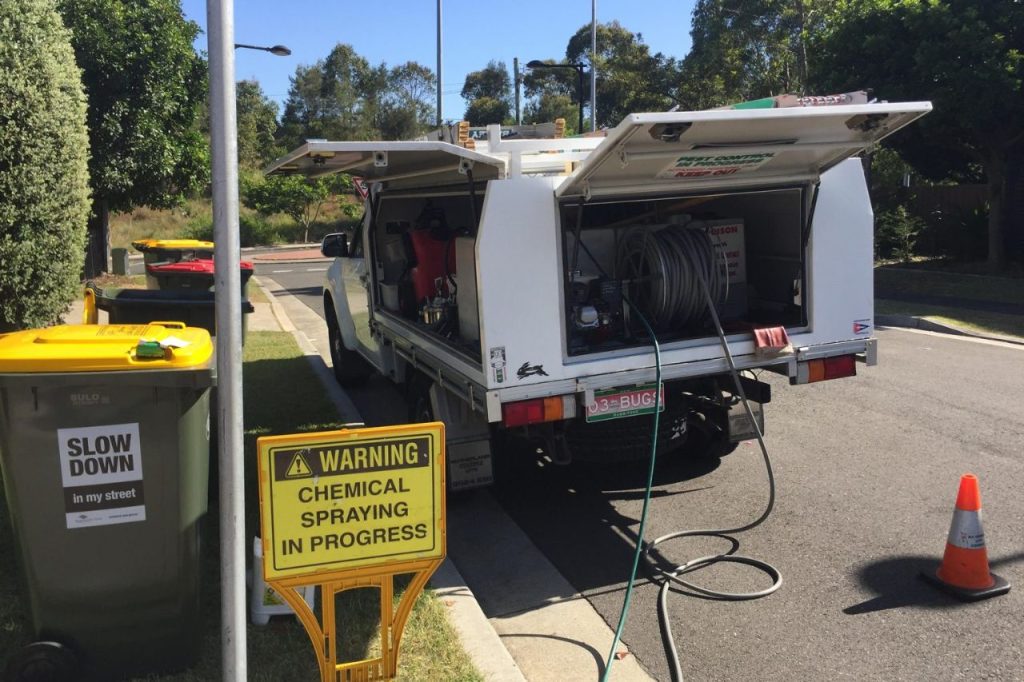Common Pests in Eastern Suburbs Sydney
Eastern Suburbs Sydney is known for its stunning beaches, lush parks, and vibrant lifestyle. In this section, we’ll delve into pest control Eastern Suburbs Sydney and how to keep your home free from pests:
1. Cockroaches: Cockroaches are unwelcome guests in many households across the Eastern Suburbs. Sydney’s climate is an ideal breeding ground for cockroaches.. They are also found in the many picnic and outdoor eating areas as well as the commercial and residential bins.
2. Ants: Ant infestations are a common nuisance in Sydney’s Eastern Suburbs. Rain can cause ants to invade a home.
3. Spiders: Sydney is home to various spider species, with some, like the infamous funnel-web spider, posing potential dangers to humans. While most spiders are harmless, their presence can still be unsettling, especially if you have arachnophobia. Some of the larger species, like huntsmen, can be harmless but their size can certainly be a shock when seen inside your home.
4. Rodents (Rats and Mice): Rats and mice are prolific breeders and can quickly become a major problem if not dealt with quickly. Rodents can damage property and are known to also carry diseases. Both pets and humans can have health concerns as a result of rodent infestation.
5. Termites: Termites, often referred to as “white ants,” are a significant threat to wooden structures in Eastern Suburbs Sydney. They can silently destroy your home’s foundation, leading to costly repairs if left untreated.
6. Mosquitoes: Sydney’s warm and humid climate also attracts mosquitoes, which can be a nuisance and transmit diseases. Their bites can leave red, itchy bumps that can be very irritating.
7. Possums: While some may consider possums cute, they can become pests when they invade your roof or garden, causing damage and noise disturbances.
Understanding some of the more common pests in Eastern Suburbs Sydney is the first step towards effective pest control.
The Dangers of Pests in Your Home
Whether you live in the Eastern Suburbs of Sydney or any other location, understanding these dangers is crucial for maintaining a safe and healthy living environment. Let’s explore some of the significant risks associated with having pests in your home:
1. Health Risks:Many pests are carriers of diseases and can transmit them to humans. Rodents, such as rats and mice are known to carry diseases such as leptospirosis and hantavirus. In Eastern Suburbs Sydney, where outdoor activities are prevalent, mosquito-borne diseases are a particular concern.
2. Property Damage:Pests can cause extensive damage to your property. Termite damage can end up needing expensive repairs and causing long term structural damage. Rodents are known for gnawing on electrical wires. This can pose a fire hazard as well as potential electrical failures.
3. Allergies and Asthma:Pest droppings, shed skin, and saliva can trigger allergies and exacerbate asthma symptoms in susceptible individuals. Dust mites, commonly found in the presence of pests like cockroaches, are a common allergen.
4. Stress and Disruption:The presence of pests in your home can be emotionally distressing.
5. Contamination of Food and Surfaces:Pests like ants, cockroaches, and rodents are notorious for contaminating food and food preparation areas. This not only leads to food wastage but also poses a risk of foodborne illnesses.
6. Property Devaluation: Without effective pest control in Eastern Suburbs of Sydney areas your property value may be reduced. Potential buyers or tenants are often deterred by the presence of pests and their potential to damage the building/s.
7. Damage to Garden and Landscaping: Outdoor pests like possums can wreak havoc on your garden and landscaping, causing damage to plants and outdoor structures.
Recognising the dangers they pose is the first step in effective pest control.

Signs of a Pest Infestation
Here are some common signs that may indicate a need for an Eastern Suburbs pest control service:
1. Droppings and Urine: One of the most visible signs of a pest infestation is the presence of droppings or urine. Different pests leave distinct types of droppings. For instance, rodent droppings are small and pellet-shaped, while cockroach droppings resemble tiny black or brown specks. Finding droppings in your home is a clear indicator that pests are present.
2. Unusual Sounds: Pests can be noisy, especially during the night when they are most active. If you hear scratching, scurrying, or gnawing sounds in your walls, attic, or under the floorboards, it could be a sign of rodents like rats or mice.
3. Chewed or Damaged Items: Rodents have a habit of gnawing on various materials to keep their teeth trimmed. If you find chewed wires, insulation, or cardboard boxes, it’s a strong indication of a rodent infestation. Termites also leave behind damaged wood with a honeycomb-like appearance.
4. Nests or Burrows: Many pests create nests or burrows as they establish their presence in your home. Look for nests made from materials like paper, twigs, or fabric in hidden corners or behind appliances. Rodents may create burrows in walls, insulation, or outdoor areas.
5. Grease Marks and Tracks: Cockroaches and rodents often leave behind greasy smudges or tracks along walls, baseboards, and other surfaces they frequent. These marks can be visible evidence of their presence.
6. Foul Odours: Certain pests, like rodents and possums, can emit strong, unpleasant odours. If you notice persistent, foul smells in specific areas of your home, it might be due to a pest infestation.
7. Visible Pest Sightings: Sometimes, you may spot the pests themselves. Whether it’s ants marching in a line, cockroaches scuttling across the floor, or rodents darting in and out of hiding spots, seeing the pests is a clear confirmation of their presence.
8. Bites or Skin Irritations: In the case of bedbugs or fleas, you or your pets may experience bites or skin irritations. These pests generally feed on blood, and their bites can result in itchy, red welts.
9. Plants and Garden Damage: If you have a garden or outdoor plants, keep an eye out for signs of damage.
DIY Pest Control Methods for a Pest-Free Home
Maintaining a pest-free home in Sydney’s Eastern Suburbs doesn’t always require professional intervention. There are several effective do-it-yourself (DIY) pest control methods you can implement to prevent or address common pest infestations. Here are some DIY pest control strategies to consider:
1. Keep Your Home Clean: Maintaining a clean and clutter-free environment is the first line of defence against pests. Regularly clean countertops, floors, and kitchen appliances to eliminate food crumbs and spills that can attract pests like ants and cockroaches. Dispose of trash promptly, and seal garbage cans tightly.
2. Seal Entry Points: Inspect your home for any gaps or cracks in walls, windows, doors, and foundation, and seal them with caulk or weatherstripping. Pests often enter through these openings, so sealing them off can prevent infestations.
3. Remove Standing Water: Mosquitoes breed in stagnant water, so be sure to eliminate any standing water sources in your yard or around your property. This includes emptying birdbaths, cleaning out gutters, and fixing leaky faucets.
4. Trim Vegetation: Keep your landscaping well-maintained by trimming bushes and trees away from your home. This prevents pests from using branches as bridges to enter your house.
5. Store Food Properly: Store food in airtight containers to prevent pests from accessing it. This is especially important for items like cereals, grains, and pet food that can attract pantry pests.
6. Regularly Inspect and Clean Storage Areas: Pests often hide in dark and undisturbed areas like basements, attics, and storage closets. Regularly inspect and clean these spaces to deter infestations.
7. DIY Traps and Baits: For certain pests like ants and cockroaches, you can use DIY traps and baits to capture or eliminate them. Commercially available traps and baits are effective, or you can make your own using common household items.
8. Natural Repellents: Consider using natural repellents like peppermint oil, vinegar, or diatomaceous earth to deter pests. These substances can be used in areas where pests are likely to enter.
9. Properly Store Firewood: If you have a fireplace or wood-burning stove, store firewood away from your home. Pests like termites and ants can infest firewood and then spread to your house.

Eco-friendly Pest Control Eastern Suburbs Sydney Solutions
Many homeowners in Sydney’s Eastern Suburbs are seeking eco-friendly pest control solutions to address pest issues while minimising harm to the environment and local ecosystems.
1. Integrated Pest Management (IPM): Integrated Pest Management is a holistic approach that focuses on prevention and uses multiple strategies to manage pests effectively. IPM involves regular inspections, sealing entry points, using natural predators, and using chemical treatments as a last resort.
2. Natural Predators: Encourage natural predators like birds, bats, and beneficial insects to your property. These creatures can help keep pest populations in check. Installing birdhouses, bat boxes, and planting flowers that attract beneficial insects are ways to support this approach.
3. Neem Oil: Neem oil, derived from the neem tree, is an eco-friendly and natural pesticide.
4. Diatomaceous Earth (DE): Diatomaceous earth is a natural and non-toxic substance made from fossilised remains of tiny aquatic organisms. It works by mechanically damaging the exoskeleton of pests, leading to their dehydration and death. DE can be used for crawling insects like ants, cockroaches, and bedbugs.
5. Essential Oils: Certain essential oils, such as peppermint, lavender, and eucalyptus, have pest-repelling properties. You can create DIY pest repellent sprays using these oils and apply them in areas where pests are likely to enter.
6. Beneficial Nematodes: Beneficial nematodes are microscopic organisms that can help control soil-dwelling pests like grubs and root-damaging insects. Safe for plants and the environment.
7. Sticky Traps: Sticky traps are an eco-friendly method for monitoring and capturing flying pests like flies and fruit flies. Non-toxic adhesives are used to catch flying and crawling insects.
8. Biodegradable Pest Barriers: Consider using biodegradable pest barriers made from materials like copper or copper mesh to deter pests from entering your home. These barriers are effective against slugs, snails, and certain insects.
9. Eco-Friendly Pest Control Services: If you decide to hire a pest control professional, inquire about eco-friendly pest control companies that prioritise environmentally responsible methods and use fewer toxic chemicals.
Here are some effective strategies for preventing future pest infestations through effective pest control Eastern Suburbs Sydney:
1. Regular Home Maintenance: Frequent home maintenance can help identify and address potential pest entry points. Inspect your home regularly for gaps, cracks, and holes in walls, windows, doors, and the foundation. Seal any openings promptly to prevent pests from entering.
2. Cleanliness and Hygiene: Maintain a clean and clutter-free living environment. Regularly clean floors, countertops, and kitchen appliances to remove food crumbs and spills that attract pests. Dispose of trash properly and keep garbage cans tightly sealed.
3. Proper Food Storage: Store food in airtight containers to prevent pests from accessing it. Keep an eye on items like cereals, grains, and pet food, which are attractive to pantry pests.
4. Eliminate Standing Water: As mentioned earlier, mosquitoes breed in stagnant water. Regularly inspect your property for sources of standing water, such as birdbaths, flower pots, or clogged gutters. Eliminate these breeding grounds to reduce the risk of mosquito infestations.
5. Maintain Landscaping: Trim bushes, trees, and shrubs away from your home to prevent pests from using them as pathways to enter your house. Regularly inspect and maintain your garden to prevent outdoor pests.
6. Repair Leaks and Moisture Issues: Pests like termites and cockroaches are attracted to moisture. Fix leaky pipes and faucets, and address any moisture issues in your home, such as leaks in the roof or basement.
7. Secure Screens and Vents: Ensure that window screens are intact and free from tears or holes. Install screens on vents and openings to prevent pests from entering through these avenues.
8. Firewood Storage: If you have firewood, store it away from your home. Pests like termites and ants can infest firewood, and keeping it at a distance reduces the risk of them spreading to your house.
9. Regular Pest Inspections: Consider scheduling regular pest inspections by a professional pest control service.
10. Educate Yourself: Stay informed about the common pests in Eastern Suburbs Sydney and their habits.
Preventing Future Pest Infestations
1. Ants:
- Seal Entry Points: Ants often enter homes through tiny cracks and gaps in walls, windows, and doors. Seal these entry points with caulk or weatherstripping.
- Remove Food Sources: Ants are attracted to food crumbs and spills. Keep your kitchen clean and store food in airtight containers. Wipe down surfaces regularly to remove food residue.
- Use Natural Repellents: Place deterrents like cinnamon, vinegar, or lemon juice near ant entry points. These scents can discourage ants from entering your home.
- Set Up Ant Baits: Consider using ant baits that contain boric acid or borax. Place them in areas where ants are active. The ants will carry the bait back to the colony, effectively eliminating it.

2. Cockroaches:
- Keep It Clean: Cockroaches thrive in dirty environments. Regularly clean your home, especially the kitchen, and eliminate food debris and spills.
- Seal Cracks and Crevices: Cockroaches hide in cracks and crevices during the day. Seal these hiding spots to limit their access.
- Use Cockroach Traps: Sticky traps or cockroach baits can help capture and eliminate cockroaches. Place them in areas where you’ve seen cockroach activity.
- Limit Water Sources: Cockroaches need water to survive. Fix any leaks, and ensure your home is dry to discourage their presence.
3. Rodents (Rats and Mice):
- Seal Entry Points: As with other pests, sealing entry points is crucial. Mice can fit through small openings, so be thorough in your inspections.
- Use Snap Traps: Snap traps are an effective way to catch mice and rats. Place them in areas where rodents are active, such as along walls and in attics.
- Keep Food Secure: Store food in rodent-proof containers and clean up food crumbs promptly.
- Regularly Inspect Attics and Basements: These areas are common hiding spots for rodents. Keep them tidy and inspect them regularly.
4. Termites:
- Regular Inspections: Schedule regular termite inspections by a professional pest control service, especially if you live in an area prone to termite infestations.
- Wood Maintenance: Repair any damaged or rotting wood promptly, as termites are attracted to weakened wood.
- Remove Moisture: Termites are drawn to moisture. Address any leaks or damp areas in your home.
- Chemical Barriers: Consider installing chemical barriers or bait systems around the perimeter of your home for long-term termite protection.
5. Mosquitoes:
- Eliminate Breeding Sites: Mosquitoes breed in standing water. Remove any sources of standing water around your property, such as containers, gutters, or birdbaths.
- Use Mosquito Screens: Install mosquito screens on windows and doors to prevent mosquitoes from entering your home.
- Use Mosquito Repellents: When spending time outdoors, use mosquito repellents containing DEET or other effective ingredients.
Conclusion:
As with most Australian suburbs, Sydney’s Eastern Suburbs has its own problems with pest infestations from natives such as possums as well as introduced species like the German cockroach.
Keep rodents and pests under control to greatly reduce the long term costs of maintaining a pest free environment.

